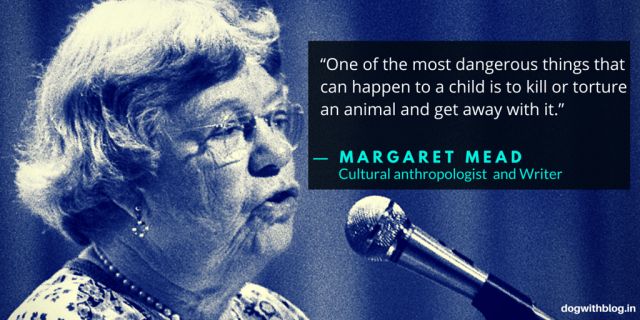
What do serial killers like Ted Bundy, Jeffrey Dahmer, and David Berkowitz have in common?
Each has a history of animal abuse and confessed to brutally killing animals during their childhood. Animal abuse is often the first sign of serious disturbance among adolescent and adult killers. “Murderers … very often start out by killing and torturing animals as kids,” says Robert K. Ressler, who developed profiles of serial killers for the Federal Bureau of Investigation (FBI).
FBI is tracking animal cruelty cases
In a welcome initiative, the FBI is now tracking data on animal cruelty cases throughout the USA, to prevent animal abuse and help flag those who might become violent offenders. In a partnership with the National Sheriffs’ Association and the Animal Welfare Institute, animal cruelty crimes will now have their own organised category within the FBI’s public collection of national crime statistics. Previously animal abuse fell into an “other crimes” category which includes minor offences like spitting. FBI tracks animal abuse just like homicide, arson and assault.
Studies have consistently linked animal abuse to violence towards humans. For example, sexual homicide offenders examined had a history of cruelty to animals. Additionally, research has found that 70% of animal abusers have committed other crimes, including violent offenses against people. Furthermore, a significant portion of individuals convicted of violent crimes, such as rape, child molestation, and assault, have reported abusing animals in their youth. These findings strongly suggest a correlation between animal cruelty and human violence.
Law enforcement agencies from 2014 began reporting animal abuse cases to the FBI using one of four categories: simple/gross neglect, intentional abuse and torture, organized abuse, and animal sexual abuse. The FBI defines animal cruelty as any intentional, knowing, or reckless act that mistreats or kills an animal without justification, including torture, torment, mutilation, maiming, poisoning, or abandonment. This policy change, which was initiated by animal welfare advocate Mary Lou Randour, marks a significant step towards increased federal attention to animal abuse.
Animal cruelty is not just an issue for the animals themselves—it’s a warning siren for communities everywhere. The FBI’s recent decision to officially track animal cruelty cases as a distinct category of crime is a hopeful step toward protecting both animals and people. This fresh focus helps shine a light on a type of violence that often goes unnoticed but can signal deeper troubles ahead.
The Warning Signs
Psychologists are increasingly focused on animal abuse in childhood as a warning sign. When a child of any age shows intentional cruelty toward animals that is repeated, severe and without remorse, this should be taken very seriously. Studies suggest a correlation between animal cruelty and serial killing. Notable examples include Dennis Nielsen, Aileen Wuornos, Ed Gein, Harold Shipman, and Richard Cottingham, who all exhibited such behavior. The cases of Dennis Rader and Lee Boyd Malvo also illustrate a potential link between animal cruelty and violent behavior, as both individuals exhibited such tendencies in their early lives.
The Federal Bureau of Investigation (FBI) considers past animal abuse when profiling serial killers. According to Robert K. Ressler, who developed profiles of serial killers for the FBI, “Murderers…very often start out by killing and torturing animals as kids.”
“Serial killers are closely linked to animal cruelty, so much so that it is exceedingly rare to find one who did not begin his or her career with animal abuse.”
– Dr. Harold Hovel in a 2015 report by the New York State Humane Association.
- According to a New South Wales newspaper, a police study in Australia revealed that 100 percent of sexual homicide offenders examined had a history of animal cruelty.
- The USA school shooters, in over 50% of the cases since 1990, regularly abused animals at some point during their childhoods.
- According to a study reported in “DA’s Link Pet Abuse, Domestic Violence,” it is estimated that 40% of women remained in the abusive household/relationship due to a very real fear of what could happen to the family pet if they left.
This data would help police look for patterns of animal abuse as well and thus better allocate their resources. The database includes information like age, criminal history, and location.Animal rights organizations can also reallocate resources based on the new federal data by focusing their attention and finances on a specific region of the country or a certain age demographic that seems most prone to animal violence.
If something feels wrong—if you see an animal suffering or notice repeated cruelty—it’s important to speak up. These are not just isolated acts of bad behavior but red flags that deserve serious attention. Together, communities can protect the voiceless, break cycles of violence, and nurture a safer world for all living beings.
This long due exercise would hopefully help animals and humans alike by identifying potential offenders.
